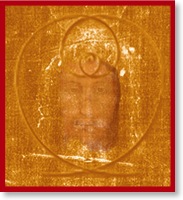
Incorruptibility
May 24, 2008
Incorrupt: Unaffected by Decay
Incorruptibility is the property of a body that does not decompose after death. Such a body is sometimes referred to as incorrupt or incorruptible (adjective) or as an incorruptible (noun). Incorruptibility is seen as distinct form of preservation, it is not mummification in any respect.
This phenomenon is universal and not cultural or religious specific. The term Incorruptibility comes from the Catholic Church, which considered the phenomenon a sign of sainthood, although the Church no longer uses this specific criterion for canonization. However the bodies of incorruptible saints are still found on display throughout the Christian world. The great majority of incorruptibility cases are associated with Catholic, Anglican, and Orthodox Christianity, but the reason for this is possibly because people of these faiths regularly exhumed the bodies of alleged saints in order to check for incorruptibility, while peoples of other cultures rarely unearthed their dead.
Another reason the bones of Christian saints where exhumed especially in the medieval era was financial. The bones of saints were seen as very powerful relics and every respectable cathedral, church, and chapel desired their own relic to sanctify the place of worship and draw worshipers looking for healing, forgiveness and or redemption. Incorruptible bodies were considered the most powerful relics (and money makers) for the church.
Incorruptible bodies were often placed on display in large glass reliquaries within churches, where many remain to this day. An incorruptible body does not exactly resemble a living body, as the skin is usually discolored and desiccated to some degree, so some incorruptible saints are enhanced with wax masks. This does not distract from the phenomenon.
It is important to note that incorruptibility is distinct from natural mummification, which may happen to a corpse in a bog setting, for example. Also, a corpse that has undergone any type of embalming may not be designated as incorruptible. Genuine Incorruptibility is not caused by unusual soil types, temperatures, or other conditions of the burial. In fact Incorruptibility has been seen in individuals prior to burial and in bodies never buried. Some Incorruptible bodies were buried and exhumed next to corpses that decayed normally, and others had clothes that decayed while the body remained intact.
In religious lore, incorruptibility is often said to be accompanied by other supernatural phenomena, including a sweet smell known as the “odour of sanctity”, a lack of rigor mortis, stigmata or martyrdom wounds that continue to bleed, physical warmth long after death, and even movement. However, such cases are not as well documented. The most common phenomena are a inner radiance of the body prior to burial and or a sweet floral like smell exuded. Some reports have a sweet-smelling oil known as “Oil of Saints” that is believed to have miraculous healing powers. But again this to my knowledge is not well documented. In some ancient cultures incorruptibility might be perceived as a sign of evil rather than holiness, suggesting that the deceased was a vampire. Though incorruptibility has never been sufficiently explained, some people believe it to be an imperfectly understood scientific phenomenon.
The common scientific explanation often attempts to pass-off the phenomenon as saponification, in which the body’s fats are converted to adipocere, a soap-like substance. Saponification is more likely to occur in corpses with large amounts of fat and in alkaline soils, and many bodies experience it to some degree, but not to the extent of preservation seen in Incorruptibles. The Incorruptibles known to the Catholic Church, however, are not particularly fat, and the soil and the humidity levels do not seem to be a significant factor.
The causes of incorruptibility are disputed. The two main positions can be summarized as an argument for a spiritual cause, or an argument for a physical or environmental cause. There is no position that I now of that combines a rational scientific model combined with a spiritual one. This is my position.
The argument for a spiritual cause may include a belief that the pious nature of the individual in some way permeated the flesh (a metaphysical cause having a physical effect), or a belief that decomposition was prevented by the intervention of a deity. I do not adhere to these faulty concepts.
The argument for a physical cause includes a belief that the corpse has been subjected to environmental conditions such that decomposition is seriously retarded. There are a number of ways of retarding decomposition, but the mechanism commonly stated is that of saponification. Another environmental condition that can be the cause of retarding decomposition is a burial ground that is cool and dry. The retardation of decomposition also occurs if the ground is comprised of soil that is high in certain compounds that bring the bodies moisture to the surface of the skin. It is believed that, under the correct circumstances, the moisture from the skin will be removed from the body, retarding decomposition. It is also suggested that bodies with low amounts of muscle and body fat tend to resist decomposition better.
This is clearly not the case with St. Bernadette – 1844-1879 Nevers.
After thirty years undisturbed in the tomb the body was exhumed from the tomb for examination. Drs. Ch. David, A. Jourdan wrote the medical report September 22, 1909. This was done again in 1909 and again in 1925. There are excellent and very poor web pages on St. Bernadette.

It is now generally considered that Incorruptibles are holy or saintly. This is broadly defined as enlightened or illuminated individuals who never sins, but more accurately as an individual that has eradicated any inclination to cause harm. But a closer look more exact definition one should look at the root of the word saint. The term “Sant” is derived from the Sanskrit “sat” referring to truth / reality. It has overlapping usages, its root meaning being “one who knows the truth” or “one who has experienced Ultimate Reality”. In more modern times the term “Sant” has come to mean simply a “good person”.
In Hinduism, incorruptibility is not required for canonization or similar formal process that acknowledges a person as saintly. Generally a holy or saintly person is referred to as a mahatma, paramahamsa, or swami, or given the prefix Sri or Srila before their name. This is generally done while they are members of the living by their teacher or other recognized living saint. These individual mostly (but not always) follow some path designed to elevate the soul by applied techniques. The keys appear to be found on the path of meditation, truthfulness, and surrendering to God. Yet it is felt to be important that the Guru (teacher) grace the sadhaka (student) with his wisdom and grace for the successful completion of self-realization, which is direct experience of Ultimate Reality.The word “saint” itself means “holy” and is derived from the Latin sanctus. The concept originates in early Greek Christian literature with the use of the word hagios (Greek άγιος meaning “holy” or “holy one”) and in the New Testament, where it is used to describe the followers of Jesus of Nazareth. (In the Old Testament, the cognate is the Hebrew word qodesh, קדש). Other religions also recognize certain individuals as having particular holiness or enlightenment.
Again most of these have some degree of experience of Ultimate Reality.
Often saintly figures are designated by having attained a sacred, immaculate or purified heart. The word heart refers to the core or center of one, the part that radiates life. In traditional Christian iconography, Saints are often depicted as having halos. This is recognition of a person that has attained a certain levels of holiness. The exact historical reason for placing a halo again a saintly figure this is vague but it may have originated by people actually seeing radiance around the physical person as is described in Buddhist documentation.
St. Charbel a Lebanese hermit of 23 years practiced poverty, penance, and asceticism, to liberate the soul in its ascent to God, died on Christmas' eve, December 24th, 1898, and was buried in the St. Maron monastery cemetery in Annaya, Turkey.
Few months later, dazzling lights were seen around the grave. From there, his corpse, which had been secreting sweat and blood, was transferred into a special coffin. Hordes of pilgrims started swarming the place to get his intercession. And through this intercession, tradition tells us, that God blessed many people with recovery and spiritual graces. I think it is possible to heal, but due to the specific gauge symmetry of the location that the body was maintained for all those years not some deities intervention.
In 1925 his beatification and canonization were proposed for declaration by Pope Pious XI. The expectation that the world would be hearing more of Charbel was soon fulfilled: his grave was immediately surrounded by an "extraordinary brightness", according to a booklet produced by the Monastery about its most famous son. The light only finally faded after 45 days, unlike public interest which continued to wax brightly: pilgrims even tried to steal pieces of his remains, which gave the authorities a reason to open the grave. The body was found floating in mud but was itself completely free from signs of deterioration "as if it had been buried that same day." It was noticed that a "blood-like liquid" exuded from the body a phenomenon which can still be seen even now. The liquid is caught in a cloth and, according to the Monastery, has over the years been responsible for many cases of healing. In this century his grave has been opened four times, the last time being in 1955, and each time "it has been noticed that his bleeding body still has its flexibility as if it were alive".
I simply ask how is this possible and what it the science-physics underpinning this phenomenon.

All Material Reserved- Copyrighted 2007 - 2008 - 2009 - 2010 - 2011 - 2012 - 2013 - 2014
James Andrew Barrett - Silent Gospel Publishing
